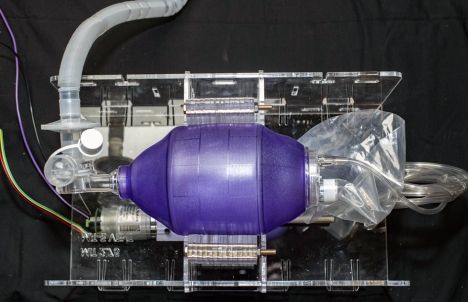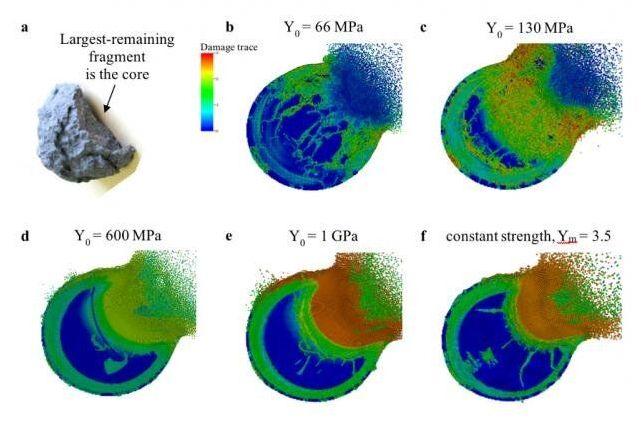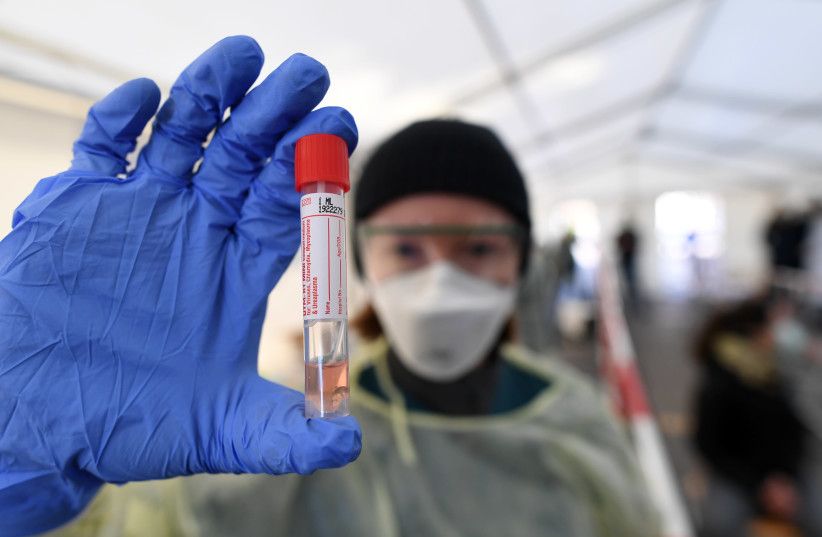Page 6758
Mar 29, 2020
Based Team Works on Rapid Deployment of Open-Source, Low-Cost Ventilator
Posted by Saúl Morales Rodriguéz in category: biotech/medical
Clinical and design considerations will be published online; goal is to support rapid scale-up of device production to alleviate hospital shortages.
Mar 29, 2020
Planetary defenders validate asteroid deflection code
Posted by Quinn Sena in categories: asteroid/comet impacts, existential risks
Planetary defense researchers at Lawrence Livermore National Laboratory (LLNL) continue to validate their ability to accurately simulate how they might deflect an Earth-bound asteroid in a study that will be published in the April issue of the American Geophysical Union journal Earth and Space Science.
The study, led by LLNL physicist Tané Remington, also identified sensitivities in the code parameters that can help researchers working to design a modeling plan for the Double Asteroid Redirection Test (DART) mission in 2021, which will be the first-ever kinetic impact deflection demonstration on a near-Earth asteroid.
Asteroids have the potential to impact Earth and cause damage at the local to global scale. Humankind is capable of deflecting or disrupting a potentially hazardous object. However, due to the limited ability to perform experiments directly on asteroids, understanding how multiple variables might affect a kinetic deflection attempt relies upon large-scale hydrodynamic simulations thoroughly vetted against relevant laboratory‐scale experiments.
Mar 29, 2020
North Korea fires two missiles as Seoul condemns ‘inappropriate’ timing
Posted by Quinn Sena in categories: biotech/medical, existential risks
Mar 29, 2020
Nuclear Proliferation Treaty Troubles Remain Unaddressed Amid a Global Pandemic
Posted by Quinn Sena in categories: biotech/medical, business, geopolitics, health, military, treaties
It is vital that would-be bombmakers be disabused of any notion that they could evade tough international sanctions. We need a country-neutral, reasonably predictable, more-or-less automatic sanction regime that puts all countries on notice, even friends of the powerful.
By Victor Gilinsky Henry Sokolski
Just as we’ve had to discard business-as-usual thinking to deal with the current worldwide health emergency; it’s time to get serious about the spread of nuclear weapons. It doesn’t have the immediacy of the coronavirus, but it will last a lot longer and is no less threatening. In particular, we need to fortify the Nuclear Nonproliferation Treaty (NPT), which is fifty years old this year and badly needs fixing. The April 2020 Review Conference will likely be postponed, which provides time to develop something more than the usual charade of incremental proposals that nibble at the problem.
Mar 29, 2020
Spread of COVID-19 begins to show pattern of 4–8 week eruption cycle
Posted by Kelvin Dafiaghor in category: biotech/medical
Analyzing the specific data of each country separately suggests that there is a light at the end of the tunnel – and that the tunnel is not that long.
Mar 29, 2020
How satellite mega-constellations will change the way we use space
Posted by Kelvin Dafiaghor in category: space
And wherever humans go, they’ll be taking satellite constellations with them to moon and Mars.
Mar 29, 2020
Study uses AI to estimate unexploded bombs from Vietnam War
Posted by Saúl Morales Rodriguéz in categories: military, robotics/AI
Researchers have used artificial intelligence to detect Vietnam War-era bomb craters in Cambodia from satellite images—with the hope that it can help find unexploded bombs.
The new method increased true bomb crater detection by more than 160 percent over standard methods.
The model, combined with declassified U.S. military records, suggests that 44 to 50 percent of the bombs in the area studied may remain unexploded.
Mar 29, 2020
Meet 2020’s Real Life Cyborgs
Posted by Derick Lee in categories: cyborgs, transhumanism
Over the last five years, London-based photographer David Vintiner and art director Gemma Fletcher have been documenting the subculture of transhumanists across Europe, Russia and the United States. Their photobook I Want To Believe, due out this spring, explores these enthusiasts’ achievements and motivations.
Dispatches from the transhumanist movement.
Mar 28, 2020
SpaceX going to the Moon with NASA
Posted by Bill D’Zio in categories: astronomy, complex systems, disruptive technology, Elon Musk, satellites, space, space travel
By Bill D’Zio, Originally posted on www.westeastspace.com March 28, 2020
NASA may have sidelined the Lunar Gateway for a return mission to the Moon, but it is not stopping the momentum. NASA has awarded several contracts for the Lunar Gateway including the most recent one to SpaceX. This demonstrates the growing capabilities of New Space companies to capture contracts and complete missions.
“This contract award is another critical piece of our plan to return to the Moon sustainably. The Gateway is the cornerstone of the long-term Artemis architecture and this deep space commercial cargo capability integrates yet another American industry partner into our plans for human exploration at the Moon in preparation for a future mission to Mars.”NASA Administrator Jim Bridenstine in a press release statement about the award to SpaceX.
NASA Awarded SpaceX the first Artemis Gateway Logistics Services (GLS) contract. The award for resupply services to the Gateway will require delivery of goods to a Near Rectilinear Halo Orbit (NRHO). Not sure what a NRHO orbit is? A NRHO is a highly elliptical orbit that takes about 7 days for each orbit. Want some more details, just click here: Near Rectilinear Halo Orbit (NRHO). There are a few options for NRHO orbits, but NASA is leaning towards the L2 9:2 lunar synodic resonant southerly Near-Rectilinear Halo Orbit (NRHO) which would be the likely location of the lunar Gateway. A simplification of the orbit is shown below.
Tags: deep space gateway, lunar outpost, MAXAR, NASA, SpaceX

















